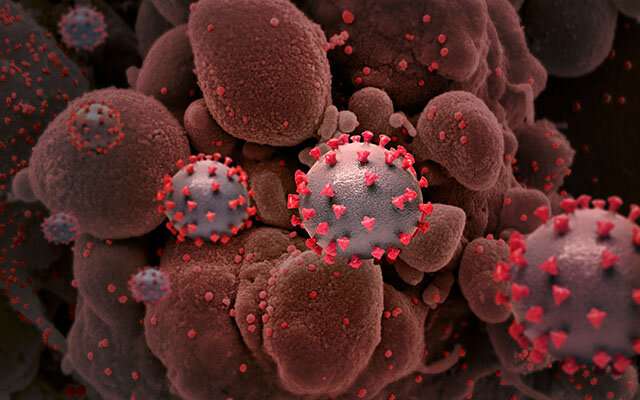A new rapid test detects a coronavirus infection in 10 minutes

An antigen-based detection technique developed by University of Helsinki researchers could be used to analyze as many as 500 samples per hour. In a recently completed study, the rapid test was able to diagnose a viral infection almost as accurately as PCR tests, which are known for their sensitivity. The new rapid test format can also be used to rapidly diagnose other respiratory infections.
The coronavirus pandemic has created a great demand for rapidly diagnosing SARS-CoV-2 infections. Reliable rapid tests are needed, for example, at airports and ports for testing travelers quickly and effortlessly before their journey.
Researchers at the University of Helsinki have developed a new rapid assay principle for viral antigen detection, applying it to diagnosing SARS-CoV-2 infections. The test is based on a phenomenon known as time-resolved Förster resonance energy transfer (TR-FRET), where energy travels between two light-sensitive molecules when they are close enough to each other. TR-FRET makes it possible to measure viral particles or the body's own proteins by using what are known as 'mix and read'-type tests on complex biological samples, such as serum or even whole blood. In fact, the researchers have previously applied the procedure in the rapid detection of antibodies.
In practice, the TR-FRET solution of the new SARS-CoV-2 rapid test functions like this: a nasopharyngeal swab taken from the test subject is mixed in a test solution which contains antibodies that recognize the SARS-CoV-2 nucleoprotein or spike protein. The antibodies marked with fluorescent labels bind with SARS-CoV-2 particles, forming molecular assemblies, or complexes, whose existence can be confirmed/detected by using a TR-FRET assay. The results come in roughly 10 minutes later: the formation of any complexes demonstrates, to a high degree of certainty, an infection caused by SARS-CoV-2 in the test subject.
A research article proving the viability of the rapid test was published this week in the mBio journal.
"We demonstrated in our study that a technique based on the TR-FRET phenomenon can be used to diagnose SARS-CoV-2 infections in clinical specimens", says Jussi Hepojoki, docent of virology and Academy of Finland research fellow at the University of Helsinki.
The antigen test detected almost all specimens containing the virus
In the research article, the researchers investigated the functioning of the rapid test using 48 specimens which had been selected on the basis of a positive SARS-CoV2 PCR test, with varying concentrations of viral RNA.
"We demonstrated that the technique we have developed was able to detect almost all positive specimens (37/38), from which we were able to isolate SARS-CoV-2 in cell culture. In other words, the carriers were likely to continue to spread the virus at the time of sample collection," Hepojoki says.
In contrast, 10 of the selected group of positive SARS-CoV-2 samples produced a positive result in a PCR test even though virus isolation was no longer possible. None of these samples yielded a positive antigen test result.
According to Hepojoki, the PCR tests available are sensitive enough to detect coronavirus even when the sample collection has not been optimal. At the same time, this sensitivity can result in cases of positive PCR test results when the infection itself has been eliminated.
"Residues of RNA, the virus's genetic material, can remain in the human body. Even a single piece of viral RNA can yield a positive result in PCR tests, whereas antigen-based tests appear to better correlate to whether SARS-CoV-2 can be isolated from the specimen, or whether the person is transmitting the virus at the time of sample collection," Hepojoki describes.
A safe way for testers to detect potential coronavirus infections
Hepojoki says that another benefit of the new rapid test developed by the researchers is its safety for testers: in practice, the virus becomes inactivated soon after being mixed in the test solution.
He says that rapid antigen-based tests could be particularly useful for testing not only travelers, but also people at educational institutions. A TR-FRET reader roughly the size of a desktop computer is needed for the test, making it possible, at least in theory, to carry out testing almost anywhere.
"The theoretical capacity of the test is very high. According to our calculations, it would be possible to manually analyze as many as 500 samples per hour, with one person doing the testing and using a single testing device. Also, the cost of test reagents is fairly low," Hepojoki notes.
In addition to the novel coronavirus, the assay principle can be utilized to detect other respiratory infections or basically any molecule: the only thing needed is an antibody capable of identifying the target molecule.
More information: Juuso Rusanen et al, A Generic, Scalable, and Rapid Time-Resolved Förster Resonance Energy Transfer-Based Assay for Antigen Detection—SARS-CoV-2 as a Proof of Concept, mBio (2021). DOI: 10.1128/mBio.00902-21


















